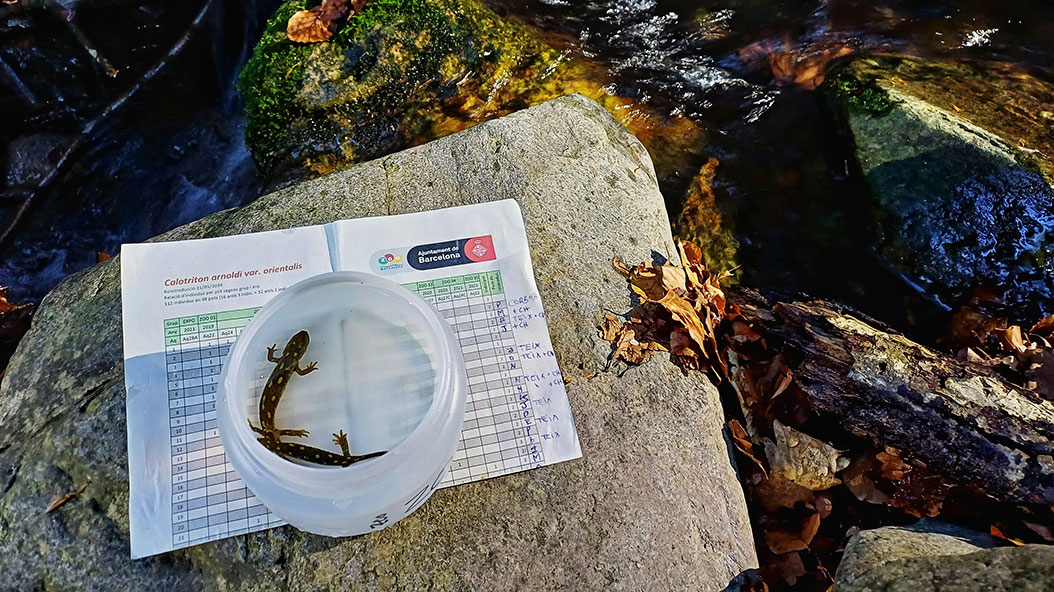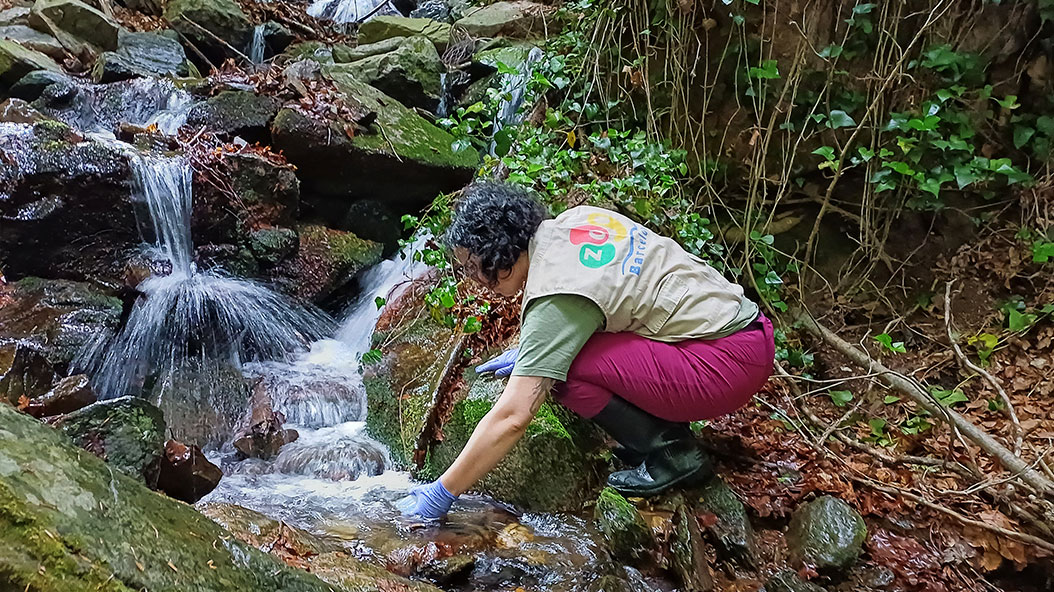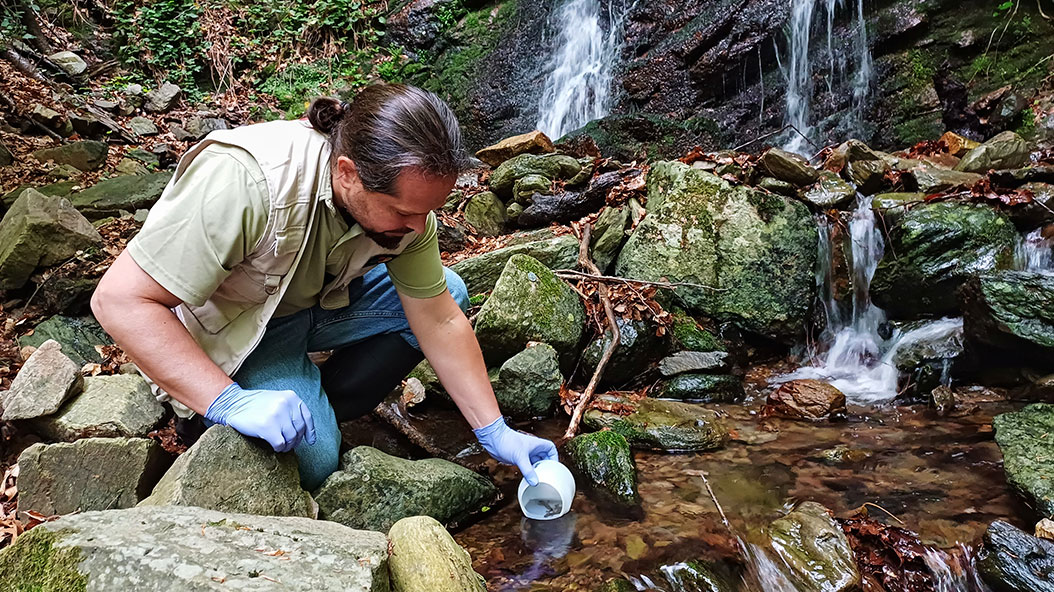This week concluded the reintroduction of more than 600 Montseny brook newt specimens (Calotriton arnoldi), an amphibian endemic to this massif that is critically endangered, according to the International Union for Conservation of Nature (IUCN).
This new reintroduction is one of the set of actions that Zoo de Barcelona, along with the Catalan Ministry of Climate Action, Barcelona Provincial Council, Girona Provincial Council, Forestal Catalana and Chester Zoo are undertaking to restore the species in its natural habitat. The actions are also a continuation of the European project called LIFE Tritó Montseny, which between 2017 and 2022 contributed to the conservation of this amphibian, considered the most endangered in western Europe.
Specifically, over the past few weeks, a total of 354 young specimens and 266 larvae have been released in different streams on Montseny. The specimens come from Zoo de Barcelona, the Generalitat de Catalunya’s Torreferrussa and Pont de Suert Fauna Centres, the Environmental Research and Education Centre of Calafell (CREAC) and Chester Zoo, all of which have their own programmes to breed and/or grow the larvae of this amphibian.

With these new reintroductions, more than 3,000 Montseny brook newts have been released into their natural habitat since 2010.
Goal: to expand the species’ area of distribution
The goals of raising Montseny brook newts in captivity and later reintroducing them are, firstly, to maintain a gene pool that guarantees the species’ future and, secondly, to expand its area of distribution, which is currently limited to just eight streams in Montseny that total 12 kilometres.
They were released into eight streams, and even though it is too early to find out whether they have been successfully reintroduced, it should be noted that spreading the distribution of the species is one of the most effective measures to guarantee its recovery.
The ongoing efforts by all the institutions involved in the project has also made it possible to report the positive development in the nature environmental of brook newts born in captivity. This confirms the chances of survival for the reintroduced specimens.
An extremely vulnerable amphibian endemic to Montseny
The first Montseny brook newt populations were discovered by chance in 1979, and were initially thought to belong to a very similar, nearby species, the Pyrenean brook salamander (Calotriton asper). However, in late 2005, several scientific studies of their morphology and genetics determined that these populations were actually another species that had gone unnoticed by science for decades because it was so rare. Ever since it was identified, the Montseny brook newt has been critically endangered and is, in fact, the most endangered amphibian in western Europe.
Based on this situation, in 2007 a programme to breed the species in captivity was launched at the Torreferrussa Fauna Centre, and in 2015, Zoo de Barcelona, the Generalitat, Barcelona Provincial Council, Girona Provincial Council and Forestal Catalana promoted an action plan to improve the conservation of its habitats and ensure the survival of this species that is endemic to Montseny.
This plan applied for and obtained funding from the European Union LIFE programme which, between 2017 and 2022, enabled the LIFE Tritó Montseny project to be implemented, coordinated by Barcelona Provincial Council, with the goal of resolving the main threats to the species and guaranteeing its protection.
Zoo de Barcelona, a leader in the protection of native endangered species
Zoo de Barcelona's contribution to the recovery of the Montseny brook newt is a clear example of its commitment to preserving biodiversity, especially native species.
In addition to the Montseny brook newt, the Zoo is also participating in projects to reintroduce into their natural environment the Spanish pond turtle (Mauremys leprosa), Hermann's tortoise (Testudo hermanni), the Spanish toothcarp (Aphanius Iberus), the Majorcan midwife toad (Majorcan midwife toad), the European polecat (Mustela putorius) and the northern bald ibis (Geronticus eremita), among others.
Furthermore, since 2018 the Zoo has also had a specific facility for the Montseny brook newt so that visitors can learn about what is being done to recover the species. The facility has information panels, videos and other interactive materials, and holds educational sessions on this and other species in Montseny.




